 W
WAbrothrix longipilis, also known as the long-haired grass mouse or long-haired akodont, is a species of rodent in the family Cricetidae. It is found in central and southern Argentina and Chile. The southern Chilean Abrothrix sanborni may not be distinct from this species.
 W
WThe alpine shrew is a species of mammal in the family Soricidae. It is found in the alpine meadows and coniferous forests of Southern European mountain ranges: the Alps, the Pyrenees, the Carpathian Mountains and the Balkans.
 W
WThe banded palm civet, also called banded civet, is a viverrid native to Myanmar, Peninsular Malaysia, peninsular Thailand and the Sunda Islands of Sipura, Sumatra and Borneo. It is listed as Near Threatened on the IUCN Red List because of its large geographic and elevation range and tolerance to some habitat disturbance.
 W
WBennett's chinchilla rat is a species of chinchilla rat in the family Abrocomidae. It is found only in Chile where its habitat is Mediterranean-type scrub on the western side of the Andes. The IUCN has assessed its conservation status as being of "least concern".
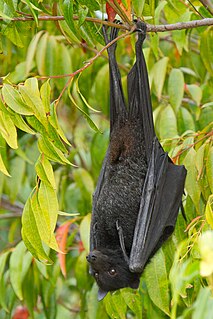 W
WThe black flying fox or black fruit bat is a bat in the family Pteropodidae. It is among the largest bats in the world, but is considerably smaller than the largest species in its genus, Pteropus. The black flying fox is native to Australia, Papua New Guinea, and Indonesia. It is not a threatened species.
 W
WThe black-striped wallaby, also known as the scrub wallaby or eastern brush wallaby, is a medium-sized wallaby found in Australia, from Townsville in Queensland to Narrabri in New South Wales. In New South Wales, it is only found west of the Great Dividing Range. It is decreasing in these areas, but is not classified as threatened as a species yet. The New South Wales population, however, is classified as endangered.
 W
WThe black-tailed jackrabbit, also known as the American desert hare, is a common hare of the western United States and Mexico, where it is found at elevations from sea level up to 10,000 ft (3,000 m). Reaching a length around 2 ft (61 cm), and a weight from 3 to 6 lb, the black-tailed jackrabbit is one of the largest North American hares. Black-tailed jackrabbits occupy mixed shrub-grassland terrains. Their breeding depends on the location; it typically peaks in spring, but may continue all year round in warm climates. Young are born fully furred with eyes open; they are well camouflaged and are mobile within minutes of birth, thus females do not protect or even stay with the young except during nursing. The average litter size is around four, but may be as low as two and as high as seven in warm regions.
 W
WThe bongo is a herbivorous, mostly nocturnal forest ungulate.
 W
WThe brown-tailed mongoose, Malagasy brown-tailed mongoose, or salano is a species of mammal in the family Eupleridae. It is endemic to Madagascar. Its natural habitat is subtropical or tropical dry forests. It is threatened by habitat loss.
 W
WDarwin's fox or Darwin's zorro is an endangered canid from the genus Lycalopex. It is also known as the zorro chilote or zorro de Darwin in Spanish and lives on Nahuelbuta National Park, the Valdivian Coastal Range in mainland Chile and Chiloé Island. This small, dark canine weighs 1.8 to 3.95 kg, has a head-and-body length of 48 to 59 cm and a tail that is 17.5 to 25.5 cm.
 W
W(Phyllotis darwini) is a species of rodent in the family Cricetidae.
 W
WDicrocerus elegans is an extinct species of deer found in France, Europe. Dicrocerus probably came from Asia, from the region where true deer are believed to have originated and evolved. It inhabited forests in the temperate belt and in Europe it was typical of the Miocene. It died out at the beginning of Pliocene without leaving any descendants.
 W
WA dik-dik is the name for any of four species of small antelope in the genus Madoqua that live in the bushlands of eastern and southern Africa.
 W
WThe dusky leaf monkey, spectacled langur, or spectacled leaf monkey is a species of primate in the family Cercopithecidae. It is found in peninsular Malaysia, Myanmar and Thailand; however, dusky leaf monkeys have occasionally been observed in Singapore. It is not clear whether these monkeys are escaped pets or whether they swam to Singapore on their own volition from Johor, Malaysia.
Eligmodontia typus is a species of rodent in the family Cricetidae. It is found in Argentina and possibly also Chile. The northernmost population might represent a distinct species, E. bolsonensis, to which the common name highland gerbil mouse would apply. The lowland population would then be known as eastern Patagonian gerbil mouse or eastern Patagonian laucha.
 W
WThe Ethiopian epauletted fruit bat is a species of megabat in the family Pteropodidae. It is found in Burundi, Chad, Republic of the Congo, Democratic Republic of the Congo, Eritrea, Ethiopia, Kenya, Malawi, Mozambique, Nigeria, Rwanda, Sudan, Tanzania, and Uganda. Its natural habitats are dry savanna and moist savanna. It is threatened by habitat destruction.
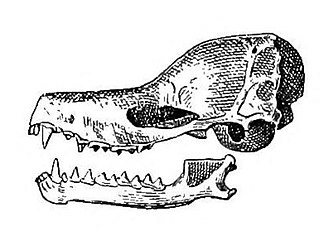 W
WGervais's funnel-eared bat is a species of bat in the family Natalidae. It is monotypic within the genus Nyctiellus. It is found in Bahamas and Cuba.
 W
WThe gray leaf-eared mouse is a rodent species from South America. It is found in Argentina, Bolivia, Brazil and Paraguay; its habitat includes the Gran Chaco.
 W
WThe greater bilby, often referred to simply as the bilby since the lesser bilby became extinct in the 1950s, is an Australian species of nocturnal omnivorous animal in the order Peramelemorphia. Other vernacular names include dalgyte, pinkie, or rabbit-eared bandicoot. Greater bilbies live in arid parts of northwestern and central Australia. Their range and population is in decline.
 W
WHumboldt's hog-nosed skunk, also known as the Patagonian hog-nosed skunk, is a type of hog-nosed skunk indigenous to the open grassy areas in the Patagonian regions of South Argentina and Chile. It belongs to the order Carnivora and the family Mephitidae.
 W
WThe Indian bush rat is a rodent species in the family Muridae. It is the only member of the genus Golunda.
 W
WThe jungle palm squirrel, jungle striped squirrel, or Western Ghats squirrel is a species of rodents in the family Sciuridae endemic to India. Its natural habitats are subtropical or tropical dry forests and plantations. This species is tolerant to habitat changes and is common in tea plantations in Western Ghats. This squirrel is confined to forests with tall trees within the West Coast of the Indian Peninsula. This confinement has led the Jungle Palm Squirrel to be a pest to cacao, mangos, grapes, and sapota, which are plants that commonly grow in the type of forest that this squirrel is confined to. The ratio between male and females is not split evenly, males have been reported to have a larger share of the population. Potential factors for the uneven sex ration include differences in "rate of persistence, mortality, dispersal, and predation pressure".
 W
WThe korrigum, also known as Senegal hartebeest, is a subspecies of the common tsessebe, an African antelope. As of 2008, its total population was estimated at maximally 2,650 animals.
 W
WThe long-fingered bat is a carnivorous species of vesper bat. It is native to coastal areas around the Mediterranean Sea, as well as a few patches of land in western Iran. Due to the fact that its population is in decline, it is listed as Vulnerable on the IUCN Red List since 1988.
 W
WThe long-nosed hocicudo is a South American rodent species found in southeastern Brazil and Uruguay. It hunts grubs and worms under the cover of leaves, logs, and stones. It has a long, flexible nose, and usually utilizes the tunnels and pathways created by other rodents.
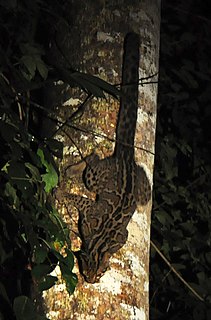 W
WThe marbled cat is a small wild cat native from the eastern Himalayas to Southeast Asia, where it inhabits forests up to 2,500 m (8,200 ft) altitude. As it is present in a large range, it has been listed as Near Threatened on the IUCN Red List since 2015.
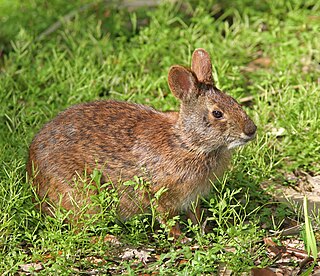 W
WThe marsh rabbit is a small cottontail rabbit found in marshes and swamps of coastal regions of the Eastern and Southern United States. It is a strong swimmer and found only near regions of water. It is similar in appearance to the eastern cottontail but is characterized by smaller ears, legs, and tail.
 W
WThe marsh rice rat is a semiaquatic North American rodent in the family Cricetidae. It usually occurs in wetland habitats, such as swamps and salt marshes. It is found mostly in the eastern and southern United States, from New Jersey and Kansas south to Florida and northeasternmost Tamaulipas, Mexico; its range previously extended further west and north, where it may have been a commensal in corn-cultivating communities. Weighing about 40 to 80 g, the marsh rice rat is a medium-sized rodent that resembles the common black and brown rat. The upperparts are generally gray-brown, but are reddish in many Florida populations. The feet show several specializations for life in the water. The skull is large and flattened, and is short at the front.
 W
WThe Moluccan flying fox, also known as the Ambon flying fox, is a species of megabat in the genus Pteropus.
 W
WThe mountain cottontail or Nuttall's cottontail is a species of mammal in the family Leporidae. It is found in Canada and the United States.
 W
WThe otter civet is a semiaquatic viverrid native to Thailand, Malaysia, Indonesia and Brunei. It is listed as Endangered because of a serious ongoing population decline, estimated to be more than 50% over the past three generations, inferred from direct habitat destruction, and indirect inferred declines due to pollutants.
 W
WThe ring-tailed vontsira, locally still known as the ring-tailed mongoose is a euplerid in the subfamily Galidiinae, a carnivoran native to Madagascar.
 W
WThe ruddy mongoose is a mongoose species native to hill forests in India and Sri Lanka. This mongoose, along with the striped-neck and Indian grey mongeese, are the only mongoose species endemic to India and Sri Lanka. The ruddy mongoose is very closely related to Indian grey mongoose, but distinguished by its slightly larger size and black-tipped tail extending for 2 to 3 inches at the distal end. There are two subspecies of this mongoose, H. smithii smithii in India, and H. smithii zeylanicus in Sri Lanka.
 W
WThe rufous rat-kangaroo, more commonly known as the rufous bettong, is a small marsupial species of the family Potoroidae found in Australia. It is not classified as threatened. The rufous bettong is about the size of a full-grown rabbit.
 W
WThe brown-tailed mongoose, Malagasy brown-tailed mongoose, or salano is a species of mammal in the family Eupleridae. It is endemic to Madagascar. Its natural habitat is subtropical or tropical dry forests. It is threatened by habitat loss.
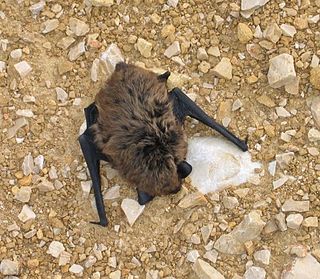 W
WSavi's pipistrelle is a species of vesper bat found across North West Africa, the Mediterranean region and the Middle East. It feeds at night on flying insects. In the summer it roosts under bark, in holes in trees, in old buildings and in rock crevices but in winter it prefers roosts where the temperature is more even such as caves, underground vaults and deep rock cracks.
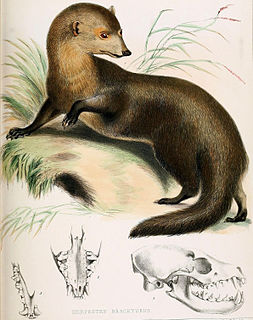 W
WThe short-tailed mongoose is a mongoose species native to Peninsular Malaysia, Sumatra and Borneo. It inhabits evergreen forest and rural gardens from sea level to an elevation of 1,500 m (4,900 ft). It is listed as Near Threatened on the IUCN Red List since 2008.
 W
WThe South American gray fox, also known as the Patagonian fox, the chilla or the gray zorro, is a species of Lycalopex, the "false" foxes. It is endemic to the southern part of South America.
 W
WThe southeastern shrew is a species of mammal in the family Soricidae. It is found in the southeastern United States.
 W
WThe southern big-eared mouse, also known as the southern pericote, is a species of rodent in the family Cricetidae. It is found in Argentina and Chile, and is one of only two species in its genus. The type specimen was captured by Charles Darwin in 1834 along the Santa Cruz River in Argentina, during the voyage of HMS Beagle, and was subsequently described by George Robert Waterhouse.
 W
WThe southern short-tailed shrew is a gray, short-tailed shrew that inhabits the eastern United States.
 W
WThe Sunda flying fox or Sunda fruit bat is a species of bat in the family Pteropodidae. It is endemic to Indonesia.
 W
WThe swamp rabbit, or swamp hare, is a large cottontail rabbit found in the swamps and wetlands of the southern United States. Other common names for the swamp rabbit include marsh rabbit and cane-cutter. The species has a strong preference for wet areas, and it will take to the water and swim.
 W
WThe tailless fruit bat is a species of fruit bat in the family Pteropodidae.
 W
WTownsend's big-eared bat is a species of vesper bat.
 W
WThe western brush wallaby, also known as the black-gloved wallaby, is a species of wallaby found in the southwestern coastal region of Western Australia. The wallaby's main threat is predation by the introduced red fox. The IUCN lists the western brush wallaby as Least Concern, as it remains fairly widespread and the population is believed to be stable or increasing, as a result of red fox control programs.
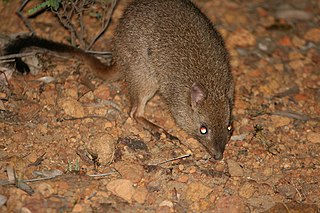 W
WThe woylie or brush-tailed bettong is an extremely rare, small marsupial, belonging to the genus Bettongia, that is endemic to Australia. There are two subspecies: B. p. ogilbyi, and the now extinct B. p. penicillata.
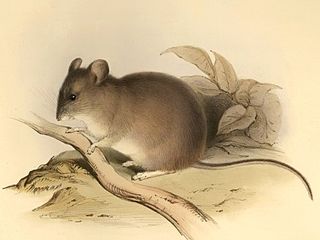 W
WThe yellow-rumped leaf-eared mouse otherwise known as the Patagonian leaf-eared mouse is a species of rodent in the family Cricetidae and order Rodentia. It is the most widespread member of the genus.